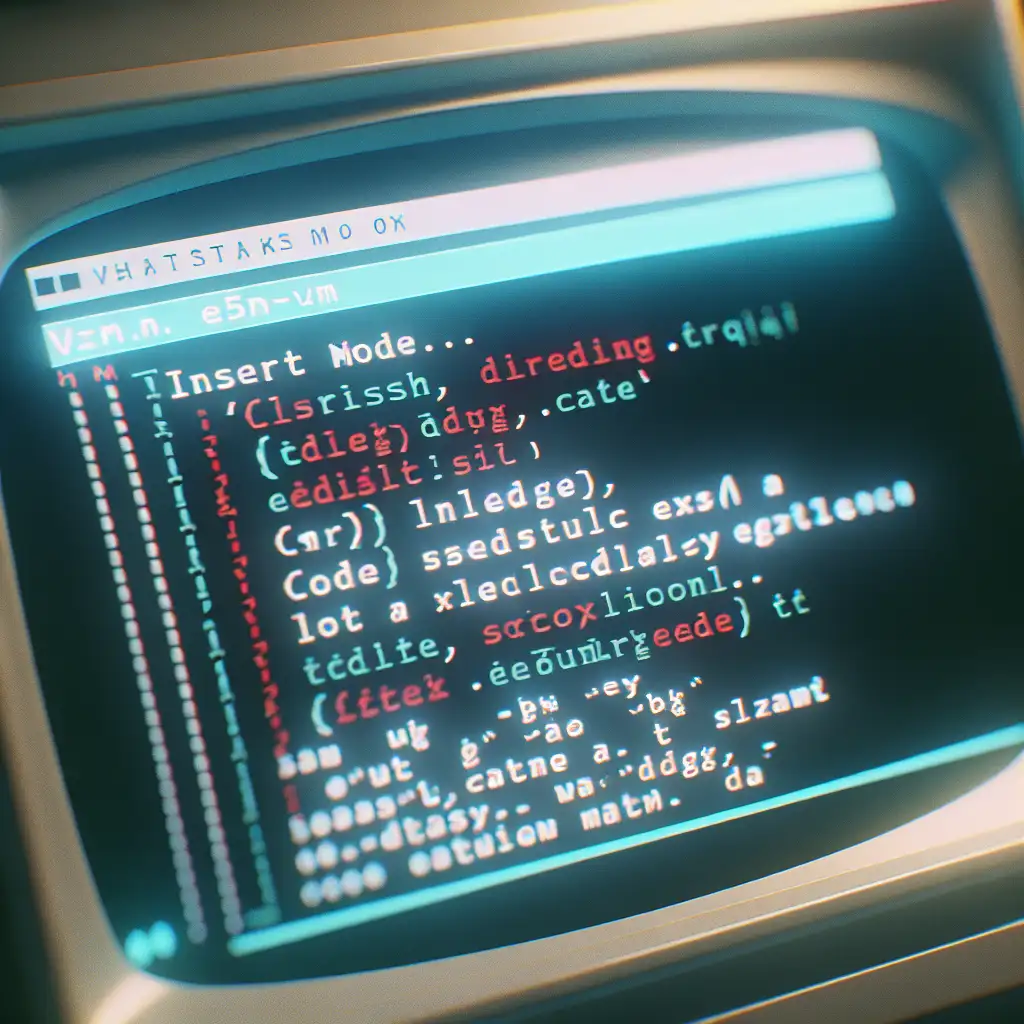Mastering Efficiency: How to Write in Vim by Leveraging Its Modal Editing Power
Tired of wasting time on repetitive, mouse-driven editing? For engineers and writers who spend hours in source files, documentation, or configuration manifests, Vim's modal editing moves productivity into a different league. It’s not intuitive—at first—but it is efficient.
Modal Editing Demystified
Vim's architecture centers around distinct modes. No ambiguous "edit everything/command everything" mashup:
- Normal mode: All movement and edits. No accidental text.
- Insert mode: For raw text input.
- Visual mode: Select/operate on text blocks.
- Command-line mode: File, search, and substitute commands.
Mode switching is instant: i enters Insert, <Esc> returns to Normal. No context menus or hand-hopping—just fingers on home row.
iHello Kubernetes YAML<Esc>
0dw " Deletes 'Hello' at start of line
Movement: The Real Differentiator
It’s never just typing—it’s moving. Stop arrow-keying through lines; Vim provides granular movement primitives:
h,j,k,l: Left, down, up, right (by character/line)w/b: Forward/backward by word0/$: Line start/endgg/G: First/last line (useful for long logs::e /var/log/syslog)
For block edits in a YAML or config:
Vjj> # Visual Line, select next two lines, indent (critical when fixing block structure)
Known issue: Deeply indented YAML can confuse which block you're in. Toggle set number or set relativenumber for better orientation.
Insert with Intention
Default to Insert mode only when writing. Use a (append), A (append at end of line), o (open line below), O (open above):
# Adding missing config in a Helm values.yaml:
/nodeSelector # Search for section
O # Open new line above
esc # Back to Normal once done
Major productivity boost: ci"—change inside quotes. Works in JSON, Markdown links, etc.
ci"This is the new string<Esc>
Undo/Redo: Not an Afterthought
Engineers rely on reliable changelogs. In Vim:
u: Undo single change.<C-r>: Redo (opposite of undo).
Vim maintains a tree of undos per file session; can navigate (:undolist), though this is per-buffer, not persistent after quit/close (unless using plugins like undotree.vim).
Editing Words: Speed Up Refactoring
Practical with docs/code comments. The following eliminates backspace habits:
| Command | Function | Typical Use |
|---|---|---|
cw | Change word, ends at word edge | Refactor variable |
ciw | Change inner word (any cursor pos) | Fix typo in comment |
diw | Delete inner word | Remove debug word inline |
dw | Delete to next word boundary | Remove placeholder |
Ex:
The lattnce supports failover.
bciwlatency
Visual Mode: Bulk Text Transformation
Multiline configs or documentation may need realignment or prefixing. Visual line (V) selects whole lines.
# Example: prefix log lines for quick grep filtering
Vjj:I[DEBUG] <Esc> # Three lines prefixed with [DEBUG]
Side note: Tabs vs. spaces—Vim respects expandtab and shiftwidth. Set in project .vimrc or explicitly per buffer (:set sw=2 et).
Macros: Automating Repetitive Edits
For structured but repetitive edits (e.g., converting error logs to Markdown bullet lists):
qaI- <Esc>jq # Macro 'a': insert "- " and move to next line
10@a # Apply 10 times from current cursor
Low overhead, but remember macros are lost after session unless explicitly saved (rarely needed—macros solve one-off tasks best).
Search and Replace: Global, Context-Aware
Vim's search/substitute via command-line is robust. Example: Renaming a deprecated field across an entire CRD manifest.
:%s/spec\.replicas/spec\.count/gc
The g is for multiple per line; c confirms each. For partial case matches, add I (case-insensitive). Missed one? Undo (u) and retry with a tighter pattern.
Advanced: Spell Check and Soft Wrapping
For Markdown/Asciidoc or code comments, enable spellcheck:
:set spell spelllang=en_us
Soft wraps for writing docs—install vim-pencil (tested on Vim 8+, Neovim 0.4+):
:PencilSoft # Activates soft mode for current buffer
Non-Obvious Tip: Session State Recovery
Occasionally, a mid-session crash or lost SSH connection will drop your unsaved edits. Vim swaps will prompt on next open:
E325: ATTENTION
Found a swap file by the name ".index.md.swp"
owned by: user ... (process ID ...)
file name: /project/docs/index.md
Recover with :recover, then :wq to save as normal. Don't ignore; swap files can prevent subtle data loss in multi-user systems.
Conclusion: It's Not About Speed—It's About Flow
Vim’s efficiency appears after the learning curve flattens. Keyboard-centric editing—jumping, transforming, and refactoring without leaving home row—translates into fewer interruptions, more accurate changes, and better focus. Not perfect: modal confusion can cause mistakes early on, and plugin/locale quirks may surface in heavy customizations or remote shells.
Engineers rarely go back after adaptation. Start small—commit to a week, avoid the mouse, lean on undo. Consider using a stripped .vimrc with only essential settings at first.
Questions about integration with LSPs or remote editing over SSH? Real-world obstacles are common—raise them and expect nuanced solutions.
